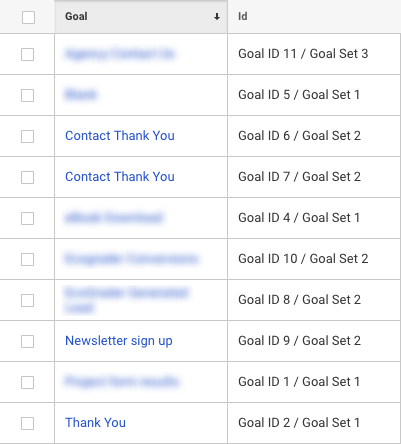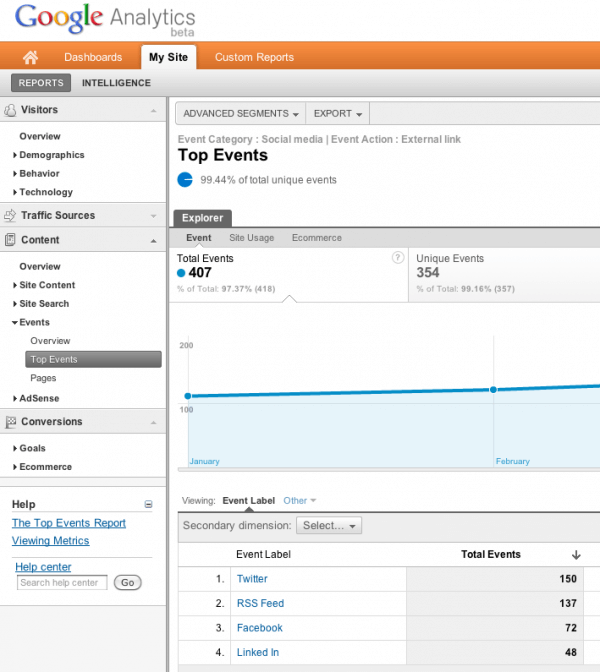Exploring What Data Is Google Analytics Goals Unable to Track
Exploring What Data Is Google Analytics Goals Unable to Track
Blog Article
Discover the Limitations of Google Analytics Goals: Revealing the Information Types That Remain Untrackable
As organizations progressively count on data-driven decision-making, recognizing the constraints of tools like Google Analytics comes to be critical. While Google Analytics Goals offer important understandings right into user communications, there exist information types that avoid monitoring, positioning obstacles to a thorough understanding of individual behavior.
Incomplete User Journey Tracking
Insufficient user trip tracking within Google Analytics can hinder the ability to properly assess customer actions. When the user trip is not totally tracked, there are spaces in the information that avoid a comprehensive understanding of how users communicate with a website. This absence of insight can lead to missed out on opportunities for optimization and enhancements to the user experience.
One usual issue with incomplete customer journey tracking is the failure to see the full path that users take before finishing a goal or leaving the website. Without this details, it is challenging to identify where customers may be coming across barriers or rubbing factors that avoid them from converting. Furthermore, insufficient monitoring can obscure the influence of particular advertising efforts or internet site modifications on customer behavior.
To resolve this restriction, it is critical to establish up correct tracking systems within Google Analytics to record the whole customer trip. This may involve establishing occasion tracking, objective funnels, or making use of devices like Google Tag Supervisor to make certain that no crucial interactions go unrecorded. By getting a thorough sight of the user trip, web site owners can make even more enlightened choices to boost individual involvement and drive conversions.
Attribution Obstacles
Navigating via acknowledgment difficulties in Google Analytics needs a complete understanding of how different touchpoints add to the general conversion process. Attribution obstacles emerge from the intricacy of modern-day consumer journeys, where users engage with numerous networks prior to transforming.
One typical attribution challenge is the problem in attributing conversions to the proper source, particularly in cases where individuals interact with several channels prior to transforming. Additionally, cross-device monitoring postures an additional attribution difficulty, as individuals commonly switch in between gadgets during their trip, making it challenging to track their communications seamlessly.
Offline Conversions
Provided the obstacles linked with associating conversions accurately in online channels, the measurement of offline conversions offers a considerable possibility for marketing experts looking for a much more thorough understanding of their customers' journey. Offline conversions describe actions that clients absorb the real world, such as making acquisitions in brick-and-mortar shops or over the phone, attending occasions, or engaging with published products - what data is google analytics goals unable to track. These conversions are crucial for services that run both online and offline, as they offer useful insights into the efficiency of advertising and marketing campaigns across various touchpoints
Tracking offline conversions commonly positioned a considerable obstacle for online marketers, as it was challenging to link these activities back to details on-line interactions precisely. With developments in technology, such as the integration of CRM systems, unique identifiers, and promo code codes, organizations can now bridge the gap between online and offline data to acquire a more holistic view of customer behavior. By like this effectively gauging offline conversions, marketing experts can maximize their approaches, designate sources a lot more effectively, and eventually improve the general customer experience.
Cross-Device Monitoring
Cross-device tracking plays a vital role in recognizing the interconnected nature of customers' electronic interactions throughout several tools. In today's omnichannel world, where users seamlessly change between desktops, mobile phones, and tablets, tracking their behavior throughout these devices is vital for marketing experts to get a comprehensive sight of their consumer trip.

Moreover, personal privacy worries and policies such as GDPR and CCPA have better complicated cross-device tracking. With users requiring even more control over their information and raised restrictions on monitoring modern technologies, marketing professionals have to find cutting-edge and privacy-compliant means to connect individual communications throughout tools.
Dynamic Web Content Engagement
Comprehending user engagement with dynamic material is crucial in maximizing electronic advertising and marketing strategies for boosted target market communication. Dynamic web content describes website elements that alter based on individual habits, preferences, or other elements, providing an individualized experience. Nevertheless, tracking customer interactions with dynamic web content postures obstacles for typical analytics devices like Google Analytics.
While Google Analytics can track basic communications like clicks and web page sights, it may battle to catch more nuanced interactions within vibrant material. what data is google analytics goals unable to track. Metrics such as time invested in specific dynamic aspects, hover activities, or interactions within pop-ups are typically not quickly measurable using typical tracking approaches. This constraint impedes online marketers' ability to fully grasp exactly how customers are engaging with vibrant web content and customize their strategies accordingly

Final Thought
In verdict, Google Analytics goals have restrictions in tracking incomplete user journeys, attributing conversions properly, capturing offline conversions, tracking cross-device interactions, and measuring dynamic web content involvement. These restraints highlight the have a peek at this website relevance of discovering extra monitoring techniques and tools to obtain a more extensive understanding of individual habits and conversions past what Google Analytics can offer.
While Google Analytics Goals deal valuable insights into customer interactions, there exist information kinds that elude tracking, posturing difficulties to a detailed understanding of individual habits.Incomplete individual trip tracking within Google Analytics can hinder the ability to precisely evaluate user behavior. When the individual trip is not completely tracked, there are gaps in the information that avoid a detailed understanding of exactly how users connect with a web site.One usual problem with incomplete user trip tracking is the inability to see the complete path that individuals take before finishing an objective or leaving the site. By getting an extensive view of the customer journey, internet site owners can make more informed decisions to enhance individual interaction and drive conversions.
Report this page